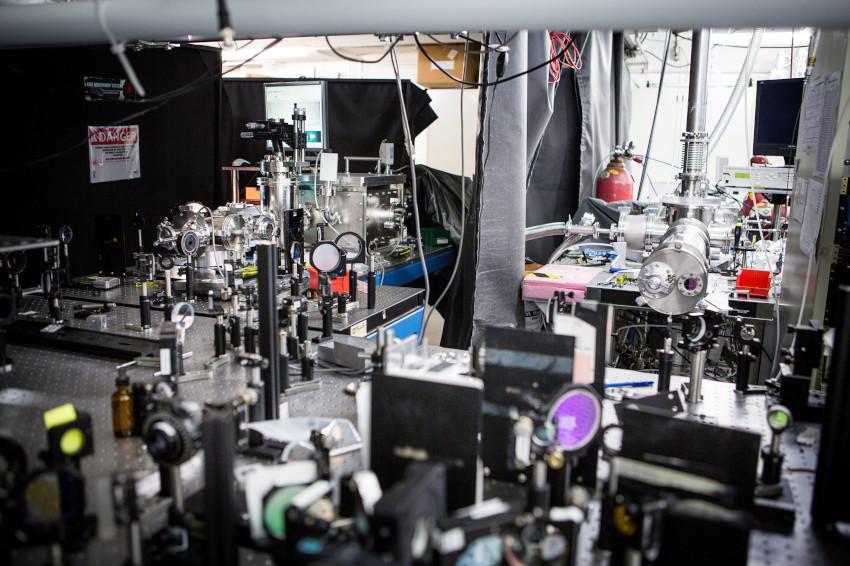Lab-scale laser for energetic XUV pulses
Laser-matter interaction between a noble gas and a primary femtosecond laser
Mangaljit Singh, Tsuneyuki Ozaki and François Légaré of the Institut national de la recherche scientifique (INRS), in collaboration with Vasily Strelkov of the Prokhorov General Physics Institute of the Russian Academy of Sciences, are set out to develop a lab-scale laser, capable of producing high-intensity light wave packets, in the extreme ultraviolet (XUV) spectrum. These quasi-monochromatic (QM) and energetic XUV pulses usually require giant facilities worth hundreds of million dollars, and hence access is highly limited.
With the new method the intense QM-XUV source could be generated in modest-scale labs. “They can have a multitude of potential applications in the field of material engineering, through material characterization using photoemission spectroscopy techniques. They could be used in microscopy with the use of high-resolution and high-contrast coherent nanoscale imaging, as well as in the field of device fabrication through semiconductor XUV lithography,” says Mangaljit Singh, PhD student in energy and materials.
QM-XUV light can be generated using the laser-matter interaction between a noble gas and a primary femtosecond laser. Through the highly nonlinear optical phenomenon of high-order harmonic generation, the near-infrared photons of the pump laser are converted into those with higher frequency in the XUV. However, the process is extremely inefficient. To overcome this critical issue, the team worked with a laser-ablated plume, generated by focusing a high-intensity laser pulse on a gallium target surface.
By exploiting the phenomenon of resonant high-order harmonic generation using gallium plume, they were able to obtain an XUV pulse a hundred times more energetic compared with the conventional techniques. The team will now try to generate similar XUV sources at shorter wavelengths. These subsequent researches could generate even higher XUV intensity and monochromaticity. (Source: INRS)







